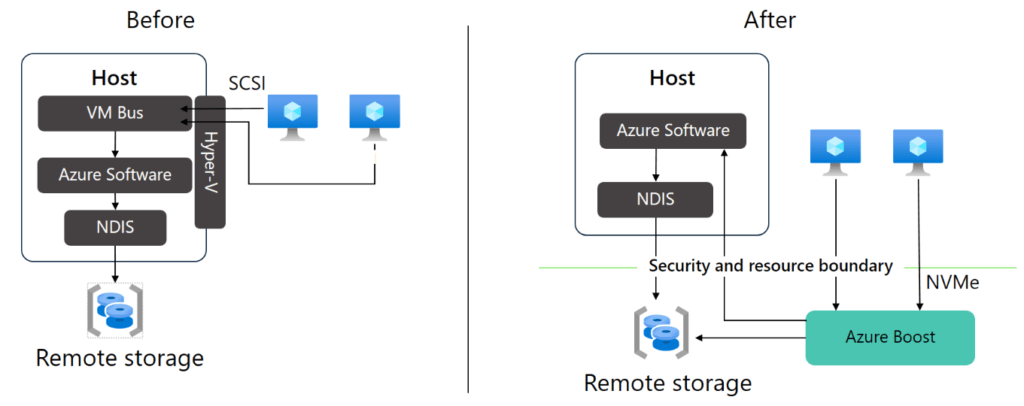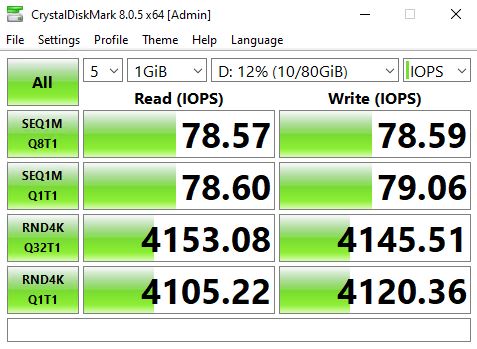Azure Boost, accelerating server virtualization in the cloud

Welcome to a new article on the Aleson ITC blog, today we will talk about Azure Boost.
In today’s business environment, Microsoft has taken a significant step with the launch of Azure Boost. This innovative service improves server virtualization management by optimizing the use of CPU resources and creating an optimal environment for handling secure workloads.
In this article, we will talk about their feature and how they can directly benefit your company, optimizing your cloud infrastructure.
What is Azure Boost?
Azure Boost is a Microsoft Azure innovation that transfers server virtualization functions, traditionally performed by the hypervisor and host operating system, to specialized hardware and software “Microsoft Azure Network Adapter” (MANA). This transfer not only optimizes CPU resources for virtual machines, but also ensures a secure foundation for cloud workloads.

Advantages
- Superior Performance: Virtualization operations that consume CPU time are offloaded to dedicated hardware, providing notable improvements in virtual machine speed and efficiency.
- Reinforced Security: With hardware and software systems developed in-house, providing a cloud environment where only trusted software and firmware are allowed to run.
- Enhanced Networking and Storage: Includes advanced networking and storage systems that significantly increase both performance and security, delivering up to 200 Gbps of network bandwidth, up to 400,000 IOPS, 10 GBps of storage performance.
Application of Azure Boost in Productive Environments
- Selecting Supported VM Sizes: Opting for supported VM sizes with Azure Boost results in improved networking and storage.
- Frontline Safety: Safety is a priority. By using the Cerberus chip for NIST 800-193 certification, workloads are protected at the hardware level.
Implementación
- Availability: Now available in several virtual machine size families, both in preview and production, providing a wide range of options for different needs and work scenarios. https://learn.microsoft.com/en-us/azure/azure-boost/overview#current-availability
Comparative Study of VMs with Azure Boost
To test these claims, we compared two virtual machines: one equipped with Azure Boost and one without. The results are revealing.
With Azure Boost
The first image shows a virtual machine using the Azure Boost optimized series. The numbers speak for themselves, showing outstanding performance in sequential and random read and write operations. Sequential read and write reach around 78 IOPS, while at 4KiB random operations, the numbers shoot up to over 4100 IOPS on both read and write. These metrics are indicative of exceptional performance that can easily handle high-demand workloads and data-intensive transactions.

Without Azure Boost
By comparison, the second image shows a standard virtual machine, where sequential read and write operations barely exceed 49 IOPS. 4KiB random operations present a significant gap, with read and write hovering around 2500 IOPS. Although these figures are respectable, they do not compare with previous ones.

Results Analysis
The above comparison clearly demonstrates that it is not simply a publicity stunt; actually provides tangible improvements in virtual machine performance. For organizations that depend on fast and efficient computing resources, especially those dealing with high-volume databases, real-time analytics or transactional applications, the difference can be stark.
VMs equipped with Azure Boost allocate CPU resources to processing tasks instead of taking them up with virtualization load. This method unlocks the full potential of applications in the VM, facilitating their operation with the speed and agility that modern markets demand.
And with this we conclude today’s post.
Are you interested in boosting your cloud infrastructure? ¡Contact us!
Azure Solutions Architect, Infraestructura e Implementación. Centrado principalmente en la plataforma Azure, la arquitectura de red y la innovación.

